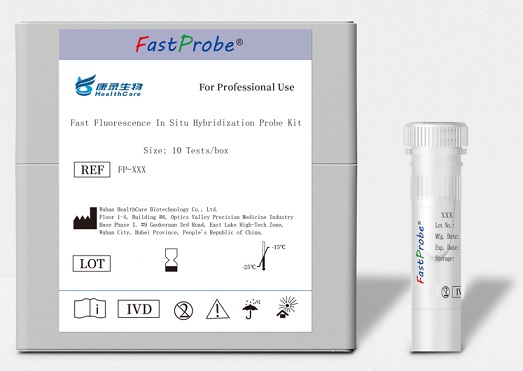IVD - FP290 BRAF/KIAA1549 Gene Fusion t(7;7) Probe Detection Kit

Cat.# FP-290: BRAF/KIAA1549 Gene Fusion t(7;7) Probe Detection Kit
[Overview]
BRAF gene encodes a protein belonging
to the RAF family of serine/threonine protein kinases. This protein plays a
role in regulating the MAP kinase/ERK signaling pathway, which affects cell
division, differentiation, and secretion. Mutations in this gene, most commonly
the V600E mutation, are the most frequently identified cancer-causing mutations
in melanoma, and have been identified in various other cancers as well,
including non-Hodgkin lymphoma, colorectal cancer, thyroid carcinoma, non-small
cell lung carcinoma, hairy cell leukemia and adenocarcinoma of lung. Mutations
in this gene are also associated with cardiofaciocutaneous, Noonan, and
Costello syndromes, which exhibit overlapping phenotypes. A pseudogene of this
gene has been identified on the X chromosome. [provided by RefSeq, Aug 2017].
The protein encoded by KIAA1549 gene
belongs to the UPF0606 family. This gene has been found to be fused to the BRAF
oncogene in many cases of pilocytic astrocytoma. The fusion results from 2Mb
tandem duplications at 7q34. Alternative splicing results in multiple
transcript variants. [provided by RefSeq, Oct 2012].
BRAF fusion involving the KIAA1549
gene is a hallmark of pilocytic astrocytoma, but it has also been recorded in
rare cases of gangliogliomas, 1p/19q co-deleted oligodendroglial tumors, and it
is also a common feature of disseminated oligodendroglial-like leptomeningeal
neoplasm. In some difficult cases, evidence for KIAA1549-BRAF fusion is of
utmost importance for the diagnosis. Moreover, because the KIAA1549-BRAF fusion
constitutively activates the MAP kinase pathway, it represents a target for
drugs such as MEK inhibitors, and therefore, the detection of this genetic
abnormality is highly relevant in the context of clinical trials applying such
new approaches.
[Download] BRAF/KIAA1549 Gene Fusion t(7;7) Probe Instructions
[Download MSDS] MSDS

